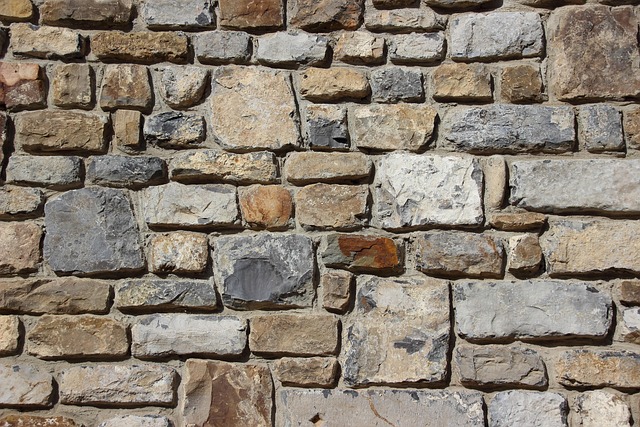In the pursuit of carbon neutral development, the focus on sustainable construction has moved beyond conventional concrete and steel to embrace the virtues of natural building materials. These materials, derived from renewable resources or waste streams, offer a low‑energy life cycle, superior thermal performance, and the capacity to sequester carbon. As the world grapples with climate change, natural building materials provide a practical, scalable route to reduce the ecological footprint of the built environment.
What Is a Natural Building Material?
A natural building material is any component used in construction that originates from the Earth and requires minimal processing, chemical treatment, or energy input. Examples include timber, bamboo, cork, hempcrete, rammed earth, clay, stone, straw bale, and recycled agricultural by‑products such as rice husk or sawdust composites. The defining feature is that these materials can be replenished or regenerated within a human time scale, ensuring that their extraction does not exhaust finite resources.
- Timber: Harvested from sustainably managed forests with certification standards such as FSC.
- Hempcrete: A mixture of hemp hurds, lime, and water that absorbs CO₂ during curing.
- Rammed earth: Compacting locally sourced soil into load‑bearing walls.
Ecological Footprint and Carbon Neutral Goals
Construction accounts for roughly 30 % of global energy consumption and a significant share of CO₂ emissions. Natural building materials can reduce embodied energy by up to 70 % compared to cement‑based alternatives. Additionally, many natural materials act as carbon sinks: timber stores carbon for the lifetime of the product, and lime‑based binders in hempcrete continue to absorb CO₂ as they cure. When paired with renewable energy on site, buildings constructed with natural materials can achieve net‑zero operational emissions while also lowering their embodied carbon.
Key Types of Natural Building Materials
Understanding the properties of each material is essential for architects and builders. The following table, presented in narrative form, highlights three widely used options and their typical performance metrics.
Timber – Strength-to-weight ratio: high; Thermal conductivity: low; Fire resistance: variable (needs treatment).
Hempcrete – Density: 800–1,200 kg/m³; Thermal insulation: R‑value 2.5–3.0; Moisture regulation: excellent.
Rammed earth – Strength: up to 3 MPa; Thermal mass: high; Durability: requires protective coatings.
Thermal and Acoustic Benefits
One of the most compelling advantages of natural building materials is their inherent ability to regulate indoor temperature and dampen sound. Thick earth walls maintain a stable internal climate, reducing the need for HVAC systems. Similarly, hempcrete’s fibrous structure absorbs vibrations, providing acoustic privacy in dense urban environments. These passive features translate into lower energy demand and a smaller ecological footprint.
Benefits of Adopting Natural Building Materials
When natural building materials are integrated into a building’s design, several benefits emerge:
- Carbon sequestration: Materials like timber and hempcrete lock atmospheric CO₂ in long‑term storage.
- Renewable sourcing: Harvesting from managed ecosystems ensures that material supply does not deplete finite resources.
- Health and comfort: Low VOC emissions and natural moisture control improve indoor air quality.
- Local economies: Production often relies on regional supply chains, boosting community employment.
Challenges and Mitigation Strategies
Despite their advantages, natural building materials face obstacles that can hinder widespread adoption. These include limited availability of high‑quality timber in certain regions, perceived fire risks, and regulatory gaps that favor conventional construction. Overcoming these challenges requires coordinated efforts:
- Developing comprehensive building codes that recognize the fire‑resistance of treated timber and the durability of earth walls.
- Investing in research to improve the mechanical properties of composite materials like hempcrete.
- Encouraging public procurement policies that reward low‑embodied‑carbon projects.
Case Studies Highlighting Success
Several landmark projects demonstrate the practical feasibility of natural building materials in large‑scale, carbon‑neutral developments.
- Eco‑Village, Sweden: A 500‑bed community built predominantly from cross‑laminated timber, achieving a net‑zero carbon balance through on‑site solar panels and district heating.
- Green School, China: A primary school constructed with bamboo framing and hempcrete walls that reduced construction waste by 30 % and maintained indoor temperatures within 24–27 °C without air conditioning.
- Rammed‑Earth Museum, Arizona: A public building that uses locally sourced clay, achieving a 70 % reduction in embodied carbon compared with conventional concrete.
Policy and Incentives for Natural Building Materials
Governments worldwide are beginning to recognize the role of natural building materials in meeting climate targets. Tax credits for green building certifications (e.g., BREEAM, LEED), subsidies for renewable material certification, and research grants for material innovation are common incentives. These policy tools lower the upfront cost barrier, encouraging developers to consider natural alternatives.
Future Outlook and Research Directions
Looking ahead, the convergence of digital fabrication, nanotechnology, and biomimicry promises to unlock new potentials for natural building materials. 3D printing with hempcrete composites, carbon‑capturing bio‑boards, and engineered timber with enhanced fire performance are emerging frontiers. Continued collaboration between scientists, architects, and policymakers will be essential to refine standards, streamline supply chains, and expand the global adoption of these eco‑friendly solutions.
Conclusion
Natural building materials are not merely a niche trend; they represent a foundational shift toward regenerative architecture. By reducing embodied energy, sequestering carbon, and enhancing occupant wellbeing, these materials play a pivotal role in achieving carbon‑neutral development. Embracing their full potential requires concerted efforts across design, engineering, policy, and market practices, ultimately creating a built environment that harmonizes with the planet’s ecological limits.




